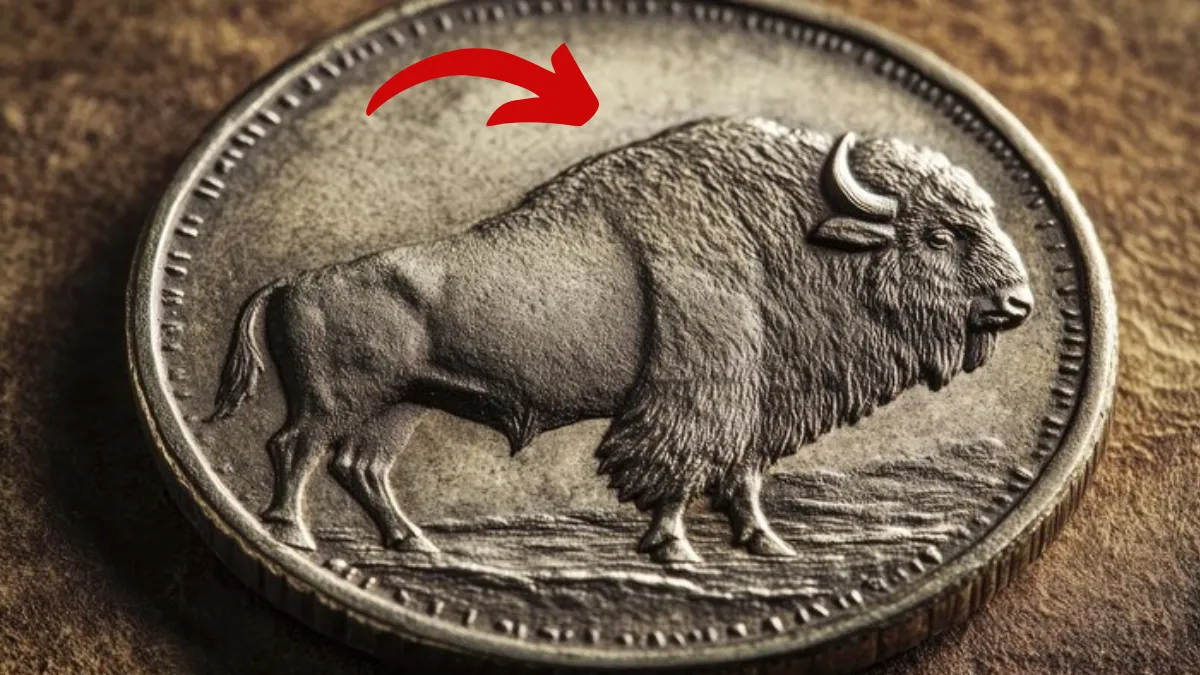Is it possible that a nickel in your pocket could be worth $601,000? Collectors are buzzing about a special type of Buffalo Nickel that might be worth that much. First made between 1913 and 1938, this coin features a Native American on one side and a buffalo on the other. It’s a classic piece of American coin history—and there’s a chance that one could still be found today. But is this high price real? Let’s look at what makes these coins valuable, how to identify one, and whether that $601,000 price tag holds up.
A Coin with a Unique History
The Buffalo Nickel, also known as the Indian Head Nickel, was introduced in 1913. Created by artist James Earle Fraser, the coin shows a Native American on the front and an American bison on the back. The design honors Native American culture and the Old West. These nickels were made until 1938 and were commonly used, so many ended up in jars, collections, and pockets. While most are worth just a few cents, certain rare versions—especially those with minting mistakes—can sell for thousands or even hundreds of thousands of dollars. That’s why some people believe one could be worth $601,000.
What Makes Some Nickels So Valuable?
Some Buffalo Nickels are rare because of mistakes made during production or because very few were made. One of the most famous is the 1916 Double Die Obverse. This version shows doubled text on the date and the word “LIBERTY.” One of these sold for $281,750 in 2006. Another valuable coin is the 1918/7-D, where the number “7” is faintly visible underneath the “8” in the date. A well-kept version can be worth up to $350,000. The most talked-about is the 1937-D “3-Legged Buffalo” Nickel. A minting error caused one of the buffalo’s front legs to disappear. In perfect condition, this coin can go for $500,000 to $600,000. The $601,000 figure probably refers to a top-grade version of this coin, though no exact sale has confirmed that number.
How to Tell If Your Nickel Is Special
If you want to search for a valuable Buffalo Nickel, here are some tips:
- Check the Date and Mint Mark: Look closely at coins from 1916 (Double Die), 1918/7-D (overdate), or 1937-D (3-legged buffalo). Mint marks like “D” (Denver) and “S” (San Francisco) are found under the buffalo on the back.
- Look for Errors: Watch for doubled letters or numbers (1916), a “7” under an “8” (1918/7-D), or one missing buffalo leg (1937-D).
- Check the Condition: Coins that are clean, shiny, and not worn down are worth more.
- Use a Magnifying Glass: Small details like a faint “7” or a missing leg are hard to spot without one.
Never clean an old coin, as that lowers its value. If you think you have a rare one, have it looked at by a grading service like PCGS or NGC to check its authenticity.
Rare Buffalo Nickels and Their Features
| Nickel | Key Features | Estimated Value |
|---|---|---|
| 1937-D 3-Legged Buffalo | Missing front leg, “D” mint mark | Up to $600,000 |
| 1918/7-D Overdate | “8” over “7” in date, “D” mint mark | Up to $350,000 |
| 1916 Double Die | Doubled date and “LIBERTY” text | Up to $281,750 |
| 1926-S Buffalo | “S” mint mark, low production (970,000 made) | Up to $50,000 |
Is the $601,000 Nickel Real?
There’s a lot of talk online about a Buffalo Nickel worth $601,000. But no official records show a sale for exactly that amount. One 1937-D 3-Legged Buffalo sold for $546,000 back in 2016, and experts believe that perfect condition coins could be worth near $600,000 today. So, while the $601,000 figure might be a little exaggerated or based on an unknown sale, coins like these are definitely worth big money. And they might still be hiding in your change or an old coin jar.
Time to Start Looking
The Buffalo Nickel proves that even a small coin can be life-changing. Even if the $601,000 price isn’t confirmed, there are Buffalo Nickels out there worth thousands. Grab a magnifying glass, check your change, or explore old family coin boxes. Visit garage sales or antique stores—you never know, your next nickel might just be the one that makes you rich!
FAQs
1. What makes the Buffalo Nickel so valuable?
Buffalo Nickels are valuable due to minting errors, low production years, and high-quality condition. Rare versions like the 1937-D 3-Legged Buffalo or 1918/7-D can fetch huge sums.
2. How can I tell if my nickel is rare?
Look closely at the date, mint mark, and design details. Use a magnifying glass to check for errors like doubled dates or missing buffalo legs.
3. Should I clean my old nickels before selling them?
No. Cleaning coins can damage their surface and lower their value. Always keep them in their original condition.
4. Where can I get my coin checked or graded?
You can send your coin to professional grading services like PCGS (Professional Coin Grading Service) or NGC (Numismatic Guaranty Company) for verification and value assessment.
